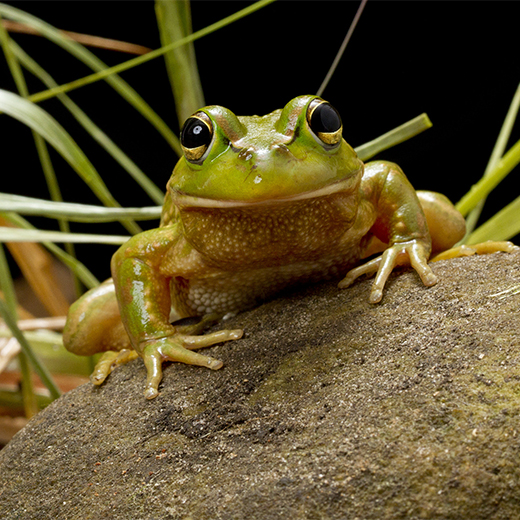Bushfires should be added to the list of long-term threats facing Australia’s frog species, according to a USC researcher involved in a seven-year study of the frogs’ ecological and genetic diversity.
USC Lecturer in Animal Ecology Dr Dominique Potvin and Museums Victoria’s Senior Curator in Herpetology Jane Melville investigated how severe bushfire events impacted the long-term survival of frog species, and found that frogs were not as resilient as previously believed.
“What we discovered was disheartening and should act as a warning call when developing future management and conservation strategies for the survival of our fauna in all fire-prone areas,” Dr Potvin said.
The findings, published in the Journal of Applied Ecology, suggested that as bushfires became more frequent and severe due to climate change, there was a greater likelihood of some frog species becoming extinct.
The research, also featured in the June edition of Australasian Science Magazine, focused on the Kinglake region of Victoria, which was devastated in early 2009 by the ‘Black Sunday’ bushfires, labelled the worst in Australia’s recorded history.
“For two years leading up to Black Sunday, we were doing research into the ecological and genetic diversity of two common species – the brown tree frog and the Victorian tree frog – which were abundant in the tall forests of the area,” Dr Potvin said.
“We continued for another five years after the fires and assumed the frogs would survive and recover, based on previous findings using traditional ecological survey techniques.
“Genetic fingerprinting techniques, however, produced a very different story on their resilience, and painted a gloomy future for our already dwindling frog species.”
By analysing the genetic profiles of the populations to measure diversity, they found that both species were significantly more inbred after the fires, and there were dramatic declines in their ability to breed and sustain themselves long-term.
The researchers expanded the study to include a third species, the vulnerable growling grass frog, and used predictive modelling to test the impact of increasing bushfire frequency on all three species.
“There is evidence that increasing bushfire frequency adds to the multitude of compounding extinction risks for frogs, that include climate change, land fragmentation, habitat loss and disease,” Dr Potvin said.
“This could also have a profound effect on the viability of many small vertebrates living in fire-prone areas.”
The findings established a clear link between a species’ ability to recover from devastating fires and its ability to recolonise or bolster dwindling populations by moving to unaffected areas.
Dr Potvin said maintaining connectivity between populations of fauna and minimising land fragmentation needed to be considered when developing future management and conservation strategies.
— Clare McKay
Media enquiries: Please contact the Media Team media@usc.edu.au

